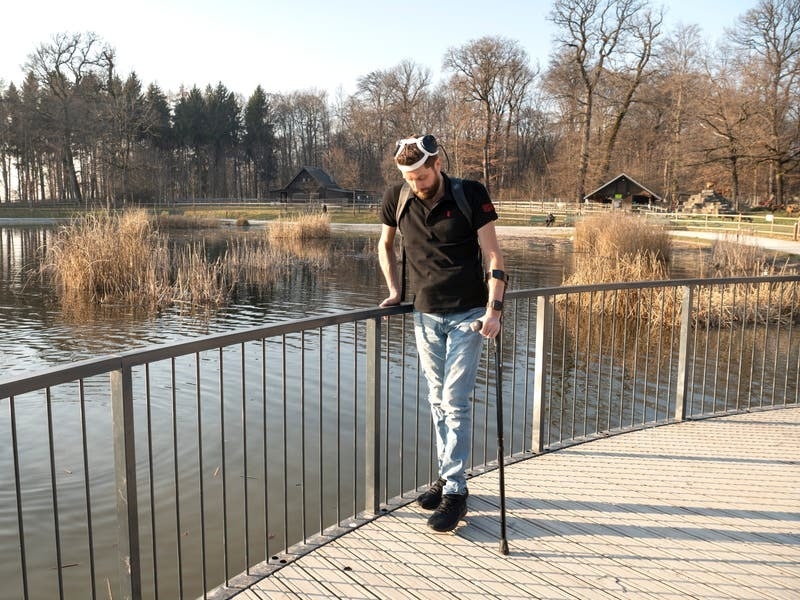A man paralysed in a bicycle accident more than a decade ago has regained the ability to stand and walk naturally, using technology developed by researchers in Switzerland.
Neuroscientists at the Ecole Polytechnique Federale de Lausanne (EPFL) have created what they call a “wireless digital bridge” which is able to restore the connection lost between the brain and the spinal cord.
This digital bridge is a brain–spine interface which allows Gert-Jan Oskam to regain control over the movement of his legs, enabling him to stand, walk and even climb stairs.
The team said their technology also enabled Mr Oskam to recover some of the brain function he had lost since his accident, where he was able to show motor skills when the digital bridge was turned off.

Mr Oskam, 40, an engineer from the Netherlands, was living and working in China when he had a cycling accident in 2011.
He injured his spinal cord and lost movement in his legs.
Neurosurgeon Jocelyn Bloch, who is a professor at the EPFL, said: “When we met Gert-Jan, he was unable to take a step after a severe spinal cord injury.”
Gregoire Courtine, a professor of neuroscience at the EPFL, said: “To walk, the brain must send a command to the region of the spinal cord responsible for the control of movements.
“Our idea was to re-establish this communication with a digital bridge – an electronic communication between the brain and the region of the spinal cord that is still intact and can control the leg movements.”
Mr Oskam underwent two surgeries to implant electrodes in the brain and the spinal cord to make the digital bridge.
The technology uses artificial intelligence to convert movement thoughts into actions, establishing a direct link between the brain and spinal cord regions involved in walking.
Prof Courtine said: “For the first time this digital bridge bypasses an injury, restoring the communication between two regions of the central nervous system that are disconnected.”

Mr Oskam said he is able to walk at least 100 metres or more, depending on the day.
He is also able to walk on crutches, when the implant is switched of, raising hope that technologies such as these could restore lost nerve function.
Prof Courtine said: “What we observed is a digital repair of the spine, a recovery of neurological function that he has lost for many years.”
Mr Oskam said: “For the first time after 10 years (I was able) to stand up and have a beer with some of my friends, so that was pretty cool.”






